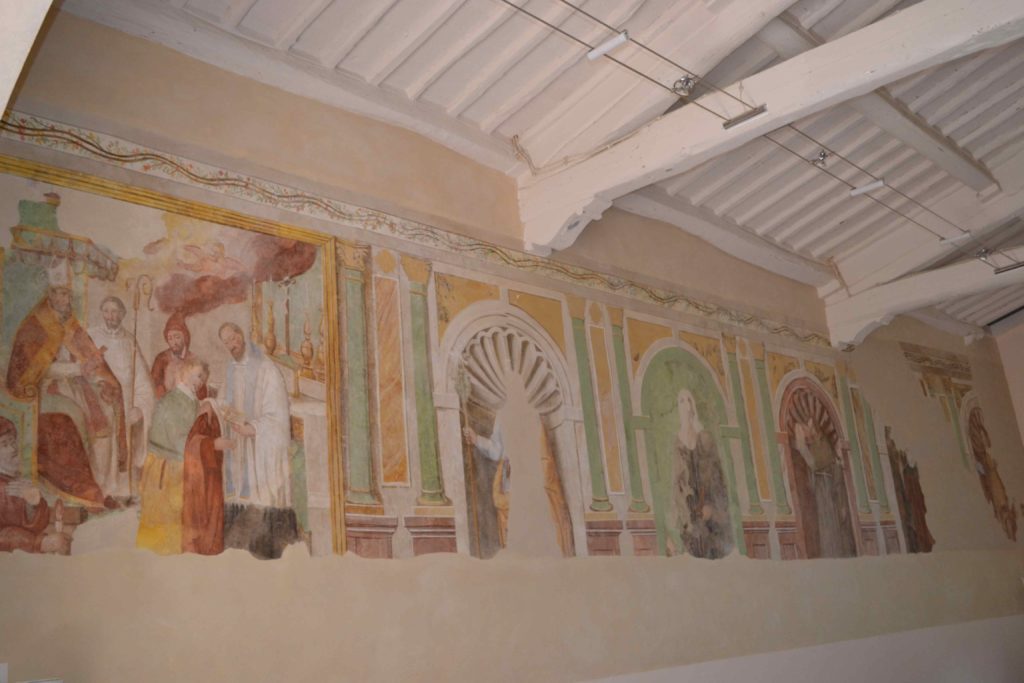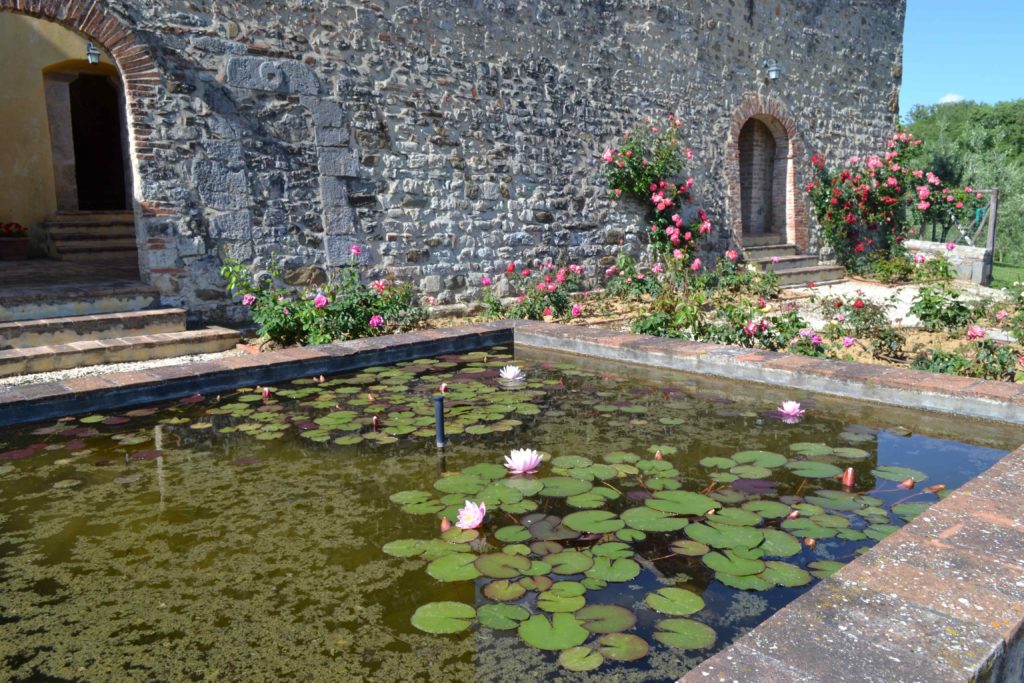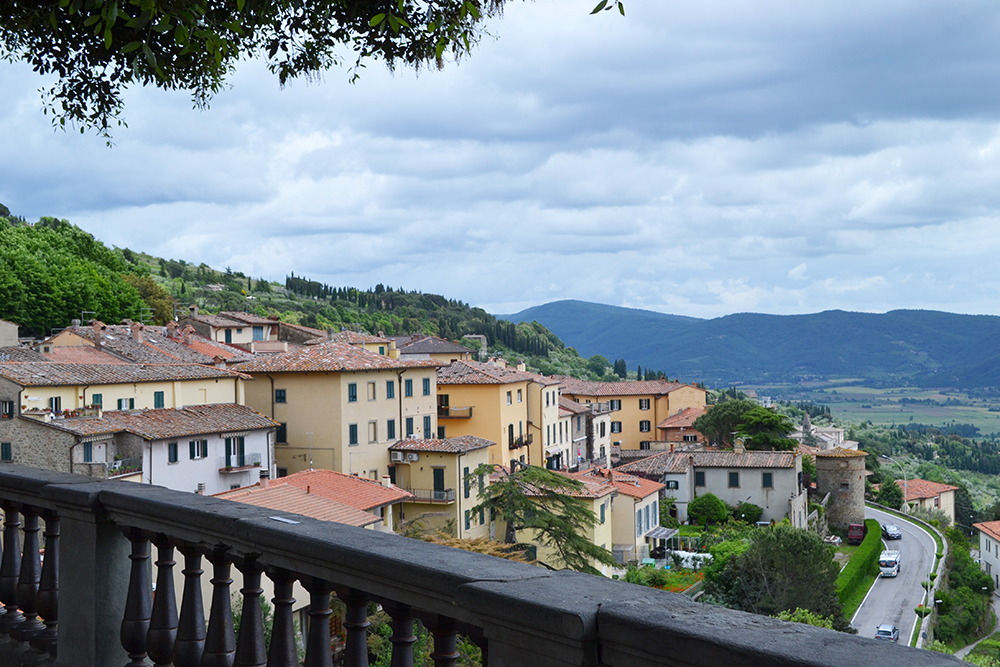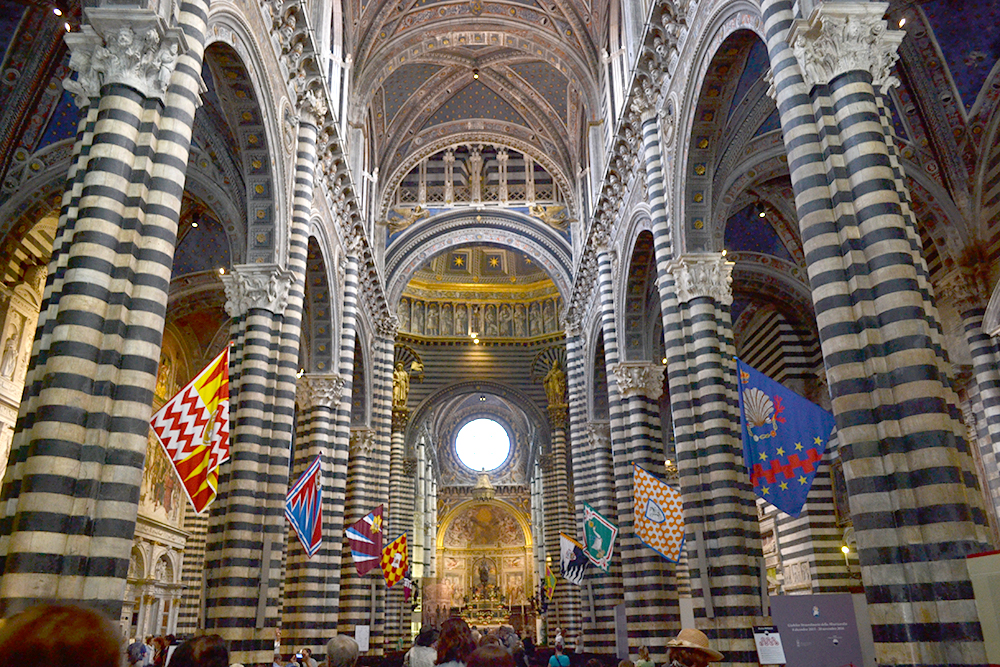A restored monastery fills its space with the spirit of life and community
Preserving art, is in itself inspiring.
I am fast forwarding past many interesting segments of my trip to Italy in order to write about San Fedele where I am taking a painting workshop. I want to be in the present as I write about the second half of the workshop located at this spectacular setting. Our hosts are treating us superbly at this restored monastery, surrounded by vineyards, Cyprus and olive trees in the Chianti hills. I am intrigued by its history and how it became what it is now.
The proprietors Nicolò and his wife, Renata, had a common vision to find property that would become their home and a place to host activities with a classic Italian style that revolves around community and bonding. When they discovered the abandoned monastery in 2001, they were drawn to it. They said it was “a moment of spontaneous madness” that began six years of meticulous restoration of San Fedele. The restoration was careful to respect the traditional methods of building in Tuscany. All materials were either original or reproduced according to the same methods used in making the originals. Craftsmen from all over the area recreated the woodwork, stonework and painting. Every roof tile and floor tile is exactly as it would have been in the original monastery.
During the restoration they found the bones of priests and residents buried over the centuries under the altar. All work had to stop while the authorities of the Catholic Church and the archeological ministry were called in to review and assess every detail and re-bury the bones. Regulators insisted that every wall in the building be checked in segments to to see what might be hidden beneath the deteriorated plaster and paint. A seventeenth century fresco was uncovered in what is now the dinning hall. It took several years for two restoration experts to meticulously uncover it only to find out some parts of the artwork were irretrievable. The fresco tells the story of a priest who was ordained and those who attended.
A seventeenth century fresco was uncovered in what is now the dinning hall.

San Fedele, now operating as the Tuscan Renaissance Center, is a vibrant and beautiful venue for people from all over the world to come and share their passions. It was a privilege for me to spend time in the inspiring environment. You can find out more at www.tuscanRC.com.






